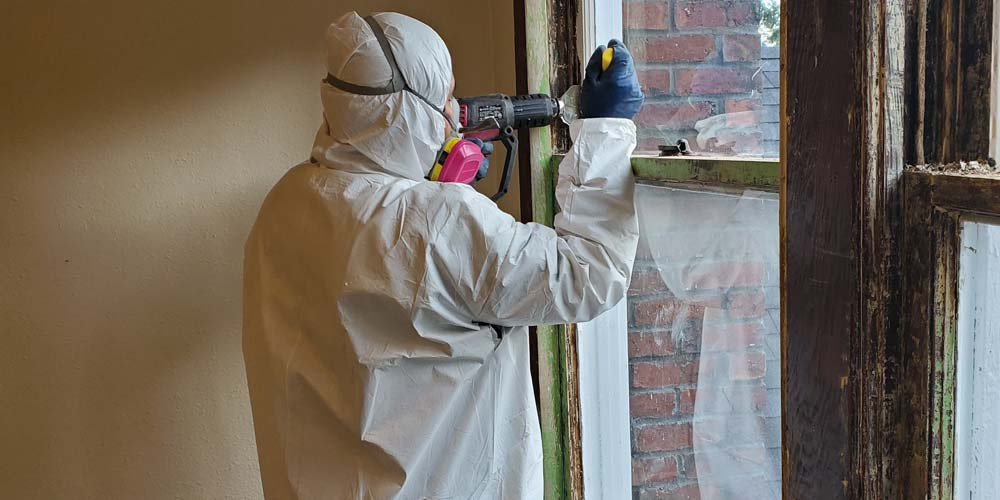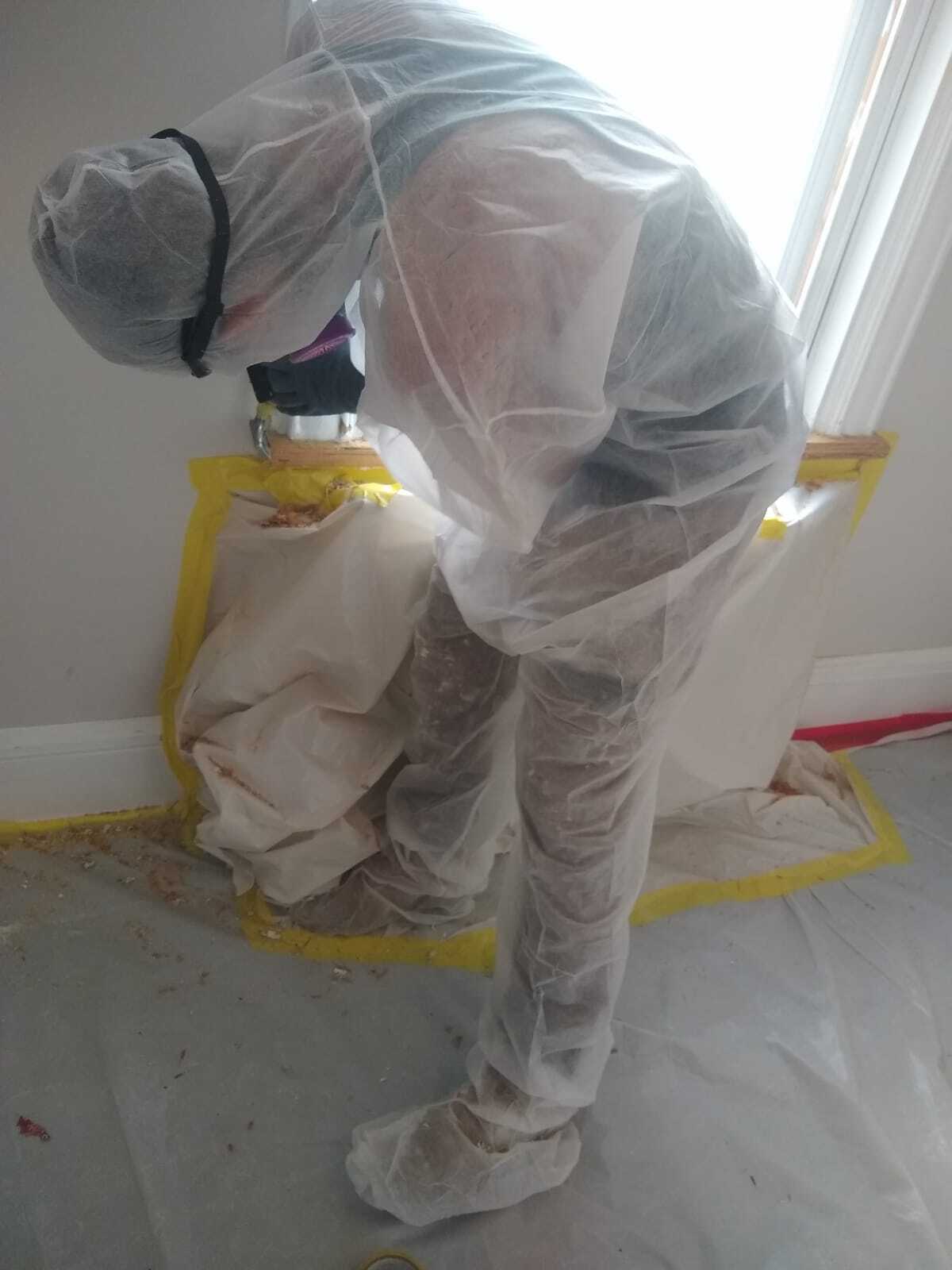Trustworthy DOH & HPD Lead Violation Removal in NYC-- Shield Your Residential property
Trustworthy DOH & HPD Lead Violation Removal in NYC-- Shield Your Residential property
Blog Article
Step-by-Step Refine for Successful Lead Offense Remediation
Dealing with lead offenses requires a meticulous and structured approach to make certain both safety and governing compliance. The journey starts with the specific detection and assessment of contamination resources, making use of sophisticated analysis tools. Following this, adherence to government and state guidelines is vital to developing an efficient remediation strategy. Such a strategy has to detail the certain techniques and timelines for activity. The actual remediation calls for experienced personnel to carry out these strategies while strictly following safety and security procedures. But what occurs after the removal is completed? The answer hinges on comprehending the vital post-remediation techniques that ensure lasting security and community wellness.

Discovery and Assessment
Detection and analysis are crucial steps in the removal of lead violations. To ensure a reliable removal process, it is vital to perform a complete examination of the atmosphere where prospective lead direct exposure exists.
As soon as discovery is accomplished, a thorough analysis has to be undertaken. This includes assessing the degree and severity of contamination, as well as identifying populations at risk, particularly kids and expectant females. Threat analyses usually entail tasting and research laboratory analysis, ecological surveys, and health impact studies. The gathered data should be thoroughly documented to sustain the development of an effective remediation technique (Lead Violation Removal in NYC).
In addition, it is imperative to focus on locations with the highest possible levels of contamination and those that posture the best wellness threats. Efficient communication with stakeholders, including home owners, homeowners, and public health and wellness officials, is important for guaranteeing that all events are notified about the searchings for and the subsequent actions needed for remediation. This first detection and assessment phase lays the groundwork for an effective lead violation removal procedure.

Legal and Regulatory Conformity
Browsing the landscape of legal and governing compliance is a crucial element of effective lead violation remediation. Conformity makes certain not just the safety and security of affected populations however additionally the credibility and lawful standing of the company responsible for remediation.
This entails thorough documents of all removal activities to demonstrate compliance. Failure to stick to these laws can result in serious charges, including significant fines, lawful activity, and reputational damage.
Involving lawful professionals focused on environmental law can promote browsing these complexities. Normal training and qualification for all employees included in the remediation procedure are likewise obligatory to ensure adherence to safety and security and governing standards. By prioritizing legal and regulative conformity, organizations can properly alleviate risks and attain a successful remediation result.
Planning the Removal
Successfully planning the removal of lead offenses begins with a complete analysis of the polluted website. This data-driven method makes sure that removal efforts are properly targeted and effective.
As soon as the contamination is mapped, a threat assessment ought to be performed to evaluate potential health and wellness threats to human beings and the atmosphere. Lead Violation Removal in NYC. This analysis should consider aspects such as direct exposure paths, population vulnerability, and environmental effects. The understandings collected will develop the basis for picking an appropriate remediation technique
Consequently, setting clear, attainable goals for the removal task is critical. These objectives should line up with governing criteria and stakeholder assumptions to make certain conformity and area approval. Establishing a detailed remediation plan that lays out approaches, timelines, and resource appropriation will facilitate an organized method to the cleaning procedure.
Additionally, it is necessary to involve with stakeholders early and maintain my blog clear communication throughout the preparation stage. This includes informing neighborhood neighborhoods, acquiring essential authorizations, and collaborating with regulative firms to make certain all lawful and procedural requirements are fulfilled. A well-crafted removal plan not only addresses the contamination effectively yet likewise builds trust fund and teamwork amongst all events included.
Performing the Remediation
With a well-structured removal plan in position, the focus shifts to the real execution of the removal activities. This stage includes mobilizing the essential resources, consisting of knowledgeable workers, specialized devices, and high-quality products. Begin by clearly marking roles and obligations to ensure liability and smooth coordination amongst team participants.
This consists of setting up containment areas to protect against lead dust and particles from dispersing, as well as using air filtration systems to maintain air quality. Utilize techniques such as damp scratching, chemical removing, or encapsulation, depending on the severity and location of the contamination.
Throughout the remediation process, conduct routine evaluations and air high quality keeping track of to make sure compliance with regulatory requirements. Effective communication with stakeholders, including homeowner and residents, is important to keep them educated of progression and any unexpected developments. By thoroughly adhering to these actions, the removal tasks can be carried out effectively and efficiently, eventually mitigating lead look at here dangers.
Post-Remediation Methods
Post-remediation techniques play a vital function in guaranteeing the long-term success of lead offense removal initiatives. see this These techniques encompass ongoing surveillance, upkeep, and area education to avoid future lead direct exposure and make sure a safe environment.
First, normal tracking is essential. This entails regular testing of the formerly impacted areas to guarantee that lead levels continue to be within risk-free limits. Property proprietors should develop a timetable for these examinations, ideally in cooperation with licensed ecological professionals.

Third, enlightening the neighborhood plays a critical duty in sustaining the advantages of remediation. Homeowners and residential property managers need to be notified concerning the dangers of lead exposure and the very best practices for keeping a lead-safe environment. Workshops, informative pamphlets, and neighborhood meetings can be efficient devices for disseminating this details.
Conclusion
Successful lead infraction remediation requires a detailed, methodical strategy including detection and evaluation of contamination, adherence to legal and regulative requirements, careful preparation, and effective execution of remediation efforts. This systematic process highlights the value of thoroughness and alertness in resolving and minimizing lead contamination.
Report this page